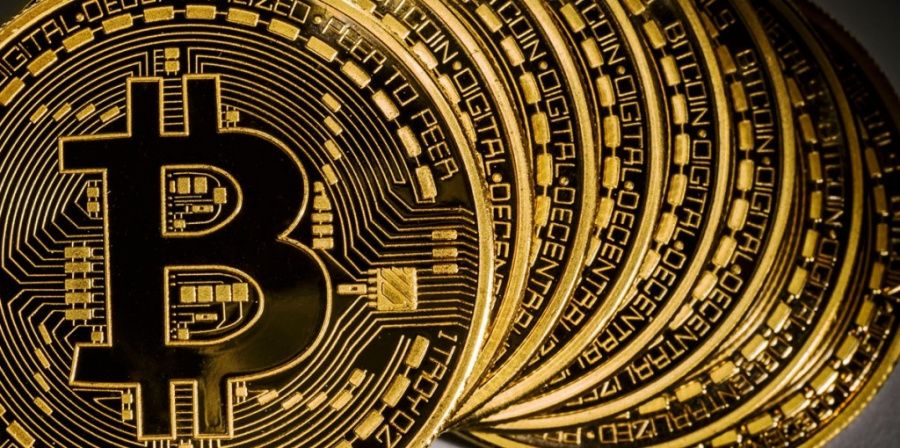Who's Afraid of the Bitcoin Hard Fork?
Updated: Nov 08, 2017 at 14:55

Bitcoin is a digital asset held in carefully crafted code. But sometimes, pressures to change the code lead to a so-called “hard fork,” after which two new blockchains may also fork and coexist - and in some cases, openly compete.
A rose is a rose is a rose - unless it is not. The name of Bitcoin has a certain mystique; it has become a story, an entity and a lot of hopes and investments hang upon it. At this point, Bitcoin is an established digital asset with record market prices above $7,000 - and just as it’s at its most influential, Bitcoin faces an identity crisis.
Planned or Accidental Forks?
The identity crisis follows a series of planned hard forks- irreversible updates to the Bitcoin Code that also create new blockchains. Those new blockchains are not blank - unlike altcoins that copy Bitcoin from the genesis block, these chains fork at a higher block and hold the whole transaction history of Bitcoin until that moment. Having a common history also means that owners of assets on the original chain end up owning a brand-new altcoin of the same amount.
Undergoing a hard fork is not a problem for Bitcoin - think of it as a software update. If it is agreed upon and greeted, it would cause no trouble.
This type of inevitable, unplanned hard fork usually solves a technical issue: fix a bug or solve a crisis. Bitcoin suffered one necessary rollback and hard fork on August 8, 2010, when a severe vulnerability in the protocol surfaced. In March 2013, an accidental hard fork occurred, when a miner created an incompatible large block. Unknowingly, miners, merchants, and users continued to build two blockchains instead of one, but the mistake was rolled back.
The corporate software we use changes all the time, and all of us adapt to the changes and enjoy the new functionalities. That's because it is centralized. We don't have a say in how Microsoft or Adobe are doing their job.
But the Bitcoin code is neither secret nor sacrosanct. It is decentralized, and while the elite club of Bitcoin developers is hard to enter, it is not impossible. Also, there is a wider circle of developers who think they can write better code and make it run, drawing in mining power. Those developers congeal in alternative communities and come up with ideas and the courage to apply them.
Currently, Bitcoin has many "soft" versions that run with different rules, and yet are compatible with each other. Creating compatible, soft-fork versions is one route where alternative code ideas find expression. A hard fork, however, expresses a more categorical desire for change and is propped up by stronger opinions.
An accidental hard fork or a crisis solution has nothing to do with the recent spike in deliberate hard forks, backed by developers and various communities, and perhaps even business interests. The drive behind those forks is sometimes not purely technological, but a matter of the philosophy of Bitcoin.
Bitcoin Cash Enters the Scene
Bitcoin had existed for more than eight years before the first planned hard fork occurred, creating two instead of one blockchain. On August 1, 2017, a group of developers, miners, and various investors activated a new blockchain called Bitcoin Cash (BCH, $440), a brand-new digital asset tasked with making transactions faster and cheaper.
The Bitcoin Cash hard fork was a watershed. The evolutionary pressure that caused it was the rising popularity of Bitcoin, leading to an increasing number of transactions. It turned out that the Bitcoin protocol could not handle the increased load of transactions, creating a backlog and making users wait for hours until a transaction could be included in the next block by the miners. This limitation severely affected the utility of Bitcoin as a means of payment, since transaction fees for miners increased accordingly.
Bitcoin Cash was the answer this August, coming with blocks twice as large - 2MB, with the possibility to scale further. This meant that every 10 minutes, twice as many transactions could be added to the distributed ledger, thus, in theory, making Bitcoin Cash a better tool for peer-to-peer payments. Bitcoin Cash went on to chart its course and has been gaining supporters in the past months.

The New York Agreement and SegWit
Just as Bitcoin Cash was struggling to gain popularity and secure mining power, the original chain still had to solve the issues of scalability. On May 23, 2017, a meeting of the Bitcoin community produced the New York Agreement - a plan to upgrade the Bitcoin blockchain in a two-step process. The first step was to implement the SegWit technology, which was done as a "soft fork", or a compatible version.
SegWit is an approach to packaging transactions so that they can be verified immediately based on partial data. Currently, the usage of SegWit is still rather low, but it is expanding.
Six months after that, another change was to be implemented by starting to mine 2MB blocks.
But as the months passed, the decision for larger blocks was met with much opposition by the Bitcoin Core team, as well as a part of the community of users. The idea for larger blocks was initially backed by 58 companies in 22 countries, and the miners behind it produced more than 83% of the hashing power of the network. Since then, around a third of the companies have withdrawn from the agreement. The plan to fork Bitcoin, however, is still in force - around November 16, based on relative block time, an alternative blockchain should split off, producing 2MB blocks. It would coexist with the original blockchain, Bitcoin Core.
Forks, Forks Everywhere
The road to chaos is paved with good intentions: while the initial idea was to evolve Bitcoin, this opened a can of worms, with the potential of causing confusion and losses.
Chiefly, it opened the floodgates to less-prepared groups of developers or plain opportunists to choose a similar route and create a hard fork of Bitcoin with a few changes in the code, supposedly providing more utility and superior technology. Bitcoin Gold (BTG, $135.58) was created on October 24 and mining was planned to start on November 1. But the project was understaffed, was met with criticism and the price of the asset tanked as soon as futures began trading on a handful of exchanges.
A few days after that came Bitcoin Silver(BTCS, $0.02), supposedly improving on Bitcoin Gold. Soon after that Bitcoin Platinum followed, as well as fork announcements that resemble pranks more than anything. Some of those forks can be compared to an attempt to pass fanfiction as part of the original Harry Potter series.
The situation even received a name, "fork and dump", as owners of Bitcoin found themselves holding those "free coins", which they quickly turned in for profits. Yet this rapid-fire selling indicates that it is not so easy to challenge the leadership of Bitcoin.
The series of shady, half-baked hard forks create a problem since a lot of new investors are flocking into Bitcoin. The appearance of alternative chains opens the doors to scams, such as faked wallets and services that steal private keys. It might not have been a coincidence that a lot of those forks were scheduled close to the SegWit2X fork, perhaps fooling some investors that they were an event of similar magnitude.
What Happens After November 16?
Currently, the only alternative blockchain with much more power to affect large investors and the wider Bitcoin community may be the aforementioned 2MB block version, SegWit2X. It has enough support from miners - at least on paper, to even deprive the Bitcoin Core chain of hashing power.
And yet nothing is certain in the world of cryptocurrencies. No one knows what actual mining will look like in the days after November 16, whether mining pools will keep their promise. No one knows which blockchain and which version of Bitcoin will be preferable to the large investors, or if they care about the technology that deeply. The original chain will also face one of the most serious stress tests in its history when it comes to drawing mining pools and buyers, and keeping the investment and hedge funds interested, besides the smaller investors.
At the very least, the markets will see a few days of confusion. Mining, block discovery and transactions will need to adjust, and we may expect user complaints and unforeseen technical problems. Exchanges and wallets will have to choose sides and award the BTC ticker to one of the blockchains.
The world of cryptocurrencies moves fast and waits for no one. It is also extremely risky. Whichever asset survives and thrives, lessons will be learned. And perhaps next time, there will be more creative solutions to improving Bitcoin.
Hard forks are frightening right now, because much value is at stake: $104.7 billion, to be more precise. Which digital asset will map that value - it remains to be seen. Will another digital asset grow just as valuable? Hard questions, only to be answered when the technology unrolls.
Bitcoin is stressed - and tested - by hard forks. But in the end, the blockchain and its supporting community might just come out stronger.
So, who’s afraid of the hard fork? Will it be
Bitcoin2X (B2X) or
Bitcoin (BTC) that will reign supreme?
About author

Pini Raviv is a software engineer and front-end team leader for an Israel-based startup. When he's not coding, this Bitcoin aficionado spends his time researching altcoins, mining Ethereum and blogging about blockchain technology.
Price
News
Price
Price
Price

(0 comments)